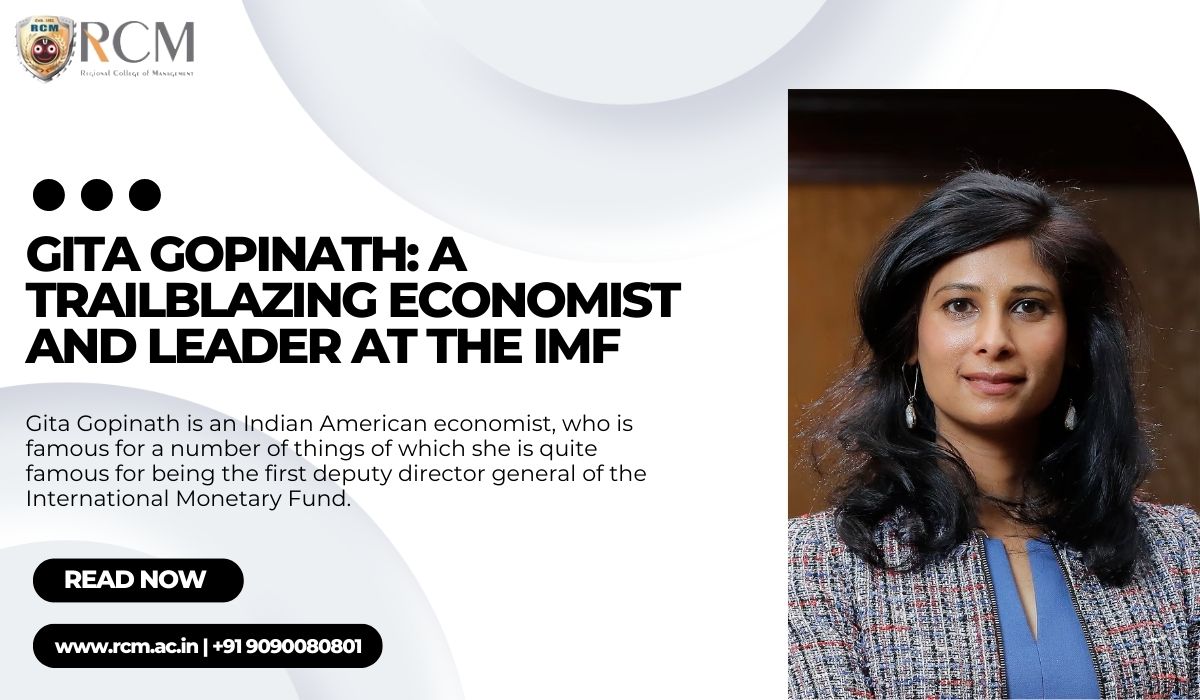Written By, Prof. Satyanath Mohapatra
Abstract
Cryptocurrency is one of the creative and innovative concepts of decentralized virtual currency. In India, it has emerged as a new investment destination similar to gold. Cryptocurrency or crypto has taken the world by storm and has become a major topic of conversation worldwide in recent days. Bitcoin (BTC), the most popular cryptocurrency, reached Rs.47,88,000 in November 2021 from $3,82,000 in March 2020.
Bitcoin is currently valued at around Rs.15,70,000 after hitting a record high of Rs.47,88,000. Ethereum (ETH), the second most valuable cryptocurrency after Bitcoin, also rose in value, reached an all-time high of Rs.3,45,000. One of the main reasons why cryptocurrency has grown spontaneously is that it is independent. It is free from any governing body such as central banks (or other banks) until the transaction is verified.
Therefore, such digital currencies are an ideal alternative to national currencies (fiat money) due to their decentralized network system, which uses a peer-to-peer payment network powered by blockchain technology. Blockchain technology uses a cryptographic protocol system to create new entities and protect all transactions that are processed and executed. These units are called blocks and they connect and ensure that each cryptocurrency is safe and secure.
The money is then stored in several computers under a unique network, this process is called mining (the process of mining ensures the validation of the cryptocurrency). A wallet is required to buy any cryptocurrency. These wallets can be either software-based also called digital wallets in the form of programs like Binance, Luno, blockchain, etc. These wallets are used to store and verify all crypto transactions. Every digital wallet has long codes that contain long letters and numbers that are difficult or impossible to decipher or hack.
This study focuses on understanding cryptocurrencies and their impact on the Indian stock market. The study also focuses on the current situation and future prospects of cryptocurrencies in India.
Introduction
The first cryptocurrency, Bitcoin, was invented by the so-called mysterious programmer Satoshi Nakamoto in 2009 with the aim of creating an electronic payment system free from government or financial interference, with the aim of creating a decentralized network that is an independent central authority or servers. In early June 2020, a Bloomberg analyst predicted that Bitcoin would rise again to its all-time high of $20,000 in 2020. As of September 2020, there were approximately 18.5 million Bitcoins in circulation worldwide, and Bitcoin’s market capitalization was approximately $200 billion. Bitcoin prices topped $20,000 on December 16, 2020.
Bitcoin price climbs to $60,000 in February after news that popular billionaire Elon Musk, CEO of Tesla Inc and Space X, announced that he bought $1.5 billion of Bitcoin (0.25 BTC) and said that customers can buy its electric vehicles with Bitcoin. Elon Musk is also known for his popular friendly tweets about cryptocurrencies, especially Dogecoin (DOGE), which sometimes causes the coin to spike. He said he wants Coinbase to add Dogecoin (DOGE) services to its peer-to-peer (P2P) cryptocurrency exchange. When this happens, Coinbase will direct DOGE’s exposure to institutional investors worldwide.
The performance of the cryptocurrency through this eventually woke up major financial players such as Black Rock, JPMorgan Chase, Alliance Bernstein, Morgan Stanley, and Tudor Investment, who responded by investing billions of dollars in digital currency. The Federal Reserve and other central banks have activated the use of Bitcoin against currency depreciation for both the cryptocurrency market and traditional financial investors. Cryptocurrency trading also did well in Turkey, as investors sought refuge from the country’s economic downturn and rising inflation.
Cryptocurrency or crypto has taken the world by storm and has become a major topic of conversation worldwide after its value increased by 50% in the last six months. Bitcoin (BTC), the most popular cryptocurrency, has more than doubled since the start of 2021, reaching $20,000 in December 2020 from $7,000 in April 2020. Bitcoin is currently worth around $60,000 after hitting a record high of $63,000.
Many financial analysts predicted that it will be worth $100,000 by the end of 2021. Ethereum (ETH), the second most valuable cryptocurrency after Bitcoin, also rose in value, reaching an all-time high of $2,205. One of the main reasons why cryptocurrency has grown spontaneously is that it is independent of any governing body such as central banks (or other banks) until the transaction is verified. Therefore, such digital currencies are an ideal alternative to national currencies (fiat money) due to their decentralized network system, which uses a peer-to-peer payment network powered by blockchain technology.
Blockchain technology uses a cryptographic protocol system to create new entities and protect all transactions that are processed and executed. These units are called blocks and they connect and ensure that each cryptocurrency is safe and secure. The money is then stored in several computers under one network, this process is called mining (the process of mining ensures the validation of cryptocurrency). A wallet is required to buy any cryptocurrency.
These wallets can be either software also called digital wallets in the form of programs like Binance, Luno, blockchain, etc., or hardware wallets. These wallets are used to store and verify all crypto transactions. Every digital wallet has long codes that contain long letters and numbers that are difficult or impossible to decipher or hack.
The cryptocurrency market is considered as an important fintech innovation that facilitates transactions and plays an important role as a medium of exchange (Bohme et al., 2018). Such a virtual currency has taken a specific place in international finance markets, especially after its fast development and rapid expansion. Specifically, in 2018, the market capitalization of the cryptocurrency market became $139bn with more than 250,000 transactions per day. (Blockchain, 2018).
Inter-market connectedness measured by return and volatility transmission offers fresh insights into global finance and has significant implications for portfolio and hedging decisions. The dynamic relationships between stock prices and cryptocurrency movements have attracted considerable attention from academics and practitioners. This issue has become more critical with the occurrence of increased market integration between traditional financial assets and cryptocurrencies (Bouri et al., 2018).
Cryptocurrencies have received substantial attention from the general public, investors, policymakers, and researchers. Some of the studies have explored whether cryptocurrencies can perform the functions of money and the findings indicate that such possibilities are less likely to occur (Ammous, 2018; Ali et al., 2014). Cryptocurrencies received attention around the globe when a remarkable increase was observed in the prices of cryptos in 2017, resulting in investors investing a huge amount of their money from their investments into these new types of financial assets.
However, the hype in the prices was not sustainable and the crypto price bubble burst at the end of 2018. This huge variation in cryptocurrency illustrates the risk associated with an investment in this type of asset. The large volatility could be the main reason behind many scientific studies that have analyzed the volatility of cryptocurrencies (Chuen et al., 2017; Dastgir et al., 2019; Demir et al., 2018; Gozgor et al., 2019); Omane-Adjepong et al, 2019; Ong et al., 2015; Peng et al., 2018; Yi, Xu, & Wang, 2018).
Nevertheless, desirable returns might not be available because of the lack of understanding of the nature of cryptocurrencies as investment assets. Corbet, Lucey, and Yarovaya (2018)suggested that investments depend on a dramatic level of risk because of the high volatility of cryptocurrencies. Hence, investors who choose to invest in different markets should have a systematic understanding of the behaviors of the returns and volatility of cryptocurrencies. The rapid growth of cryptocurrencies also generates prices prone to speculative bubbles, which would create a considerable volatility innovation that can spread gradually to other financial markets. As a result, capturing the patterns of information transmission between major stock markets and cryptocurrencies is highly crucial.
Literature Review
Stock indices are used to calculate the value of the sectors of industries that are listed on the stock exchange. It is a tool that fund managers and stakeholders use to analyze the stock market and determine the profitability of various investments in a certain industry. The price movement of shares of connected companies listed on the stock exchange is predicted using an index, which is a mathematical construct. Although many investors in mutual funds and exchange-traded funds like to watch the index, funds that don’t may be compared to those that do. The performance of stock indices can be used by an investor to assess their success. The frequency of stocks in the market is calculated using the stock indices. By understanding how stock indices behave, investors can analyze and predict future changes in the stock market.
The performance of indices on the stock market is determined by changes in the driving forces of the stock market indices, which are incredibly sensitive to changes in the stock exchange. Before looking into the relationship between macroeconomic variables and stock indices of Indian-related companies on the Indian stock market, it is important to review the theoretical background and actual data.
There are a number of studies done on the impact of Digital Currency on the stock market.
- Hassanudin Mohd Thas Thaker and Abdollah Ah Mand (2020) This study looked into the long-run and short-term linkages, correlations, volatilities, temporal frequency domains, and lead-lag analyses of the relationship between BTC and Asian Stock Indices from July 20, 2010 to April 26, 2019.
- The techniques employed were VECM, Granger causality, M-GARCH, and Wavelet Analysis. First, all market indices displayed a long-term link with BTC based on VECM. Japan, KOR, STI, and Hong Kong were the four markets where negative associations were identified. One market, PHIL, has developed a good relationship with BTC. In addition, the ECT assumed that all Asian markets would change more slowly than expected. Compared to other markets, Singaporean investments experience less volatility. Additionally, they saw that three markets (KOR, STI, and HK) had a negative correlation with BTC, while two other markets had a positive association (i.e., JPN and PHIL). These results are in line with what VECM predicted.
- Muhammad Umar et al. (2020) this study, we empirically looked into how well-known stock markets and cryptocurrencies integrate. The asymmetric dynamic conditional correlation between the stock indices and cryptocurrency markets throughout the indicated period is first detected using the ADCC model. Second, we were able to deconstruct the multiple series at various temporal frequencies thanks to wavelet coherence analysis. The findings demonstrate that while there is often no connection between stock markets and cryptocurrencies, there are time-varying correlations between the bulk of the chosen crypto currency-stock market index combinations. The results suggest that, in most instances, negative shocks are far more important than positive shocks of the same magnitude when it comes to asymmetry property.
- This study focuses on the dynamic interdependence between the main stock markets and the cryptocurrency markets, which has important implications for portfolio diversification, financial regulation, and hedging. Investors and fund managers should exercise caution when merging cryptocurrencies with other traditional asset classes because cryptocurrencies have shown evidence of racial integration with mature stock markets. While policymakers and regulators should be concerned with the return and volatility spillover effects between cryptocurrency and stock markets, market participants should take into account all potential market situations.
- Mallick & Mallick (2021) found the relationship between the official “Indian Currencies foreign exchange rates or ICX (GBP, USD, YEN, EURO, etc.)” and cryptocurrencies like “Binance Coin”, “Litecoin”, Ethereum, and Bitcoin with daily analysis during December 17, 2019, to June 17, 2021. There is a “significant positive relationship” between “Binance Coin and Ethereum” with Bitcoin, “Binance Coin and Bitcoin” with Ethereum, “Binance Coin” with Litecoin, and Litecoin with “Binance Coin”.
- There is a negative relation between Litecoin and USD. Hence, Litecoin can be useful for diversification and hedging. There is also minimal impact on crypto markets from foreign exchange markets in India. They discussed the reason behind that may be because of the lack of a legal framework for recognition by the government. It also causes a lack of public acceptability.
- Rohit Morbale, Bhushan Patil & Nripesh Nrip (2022) studied to understand cryptocurrency and its effect on the economy. They found Since there is a lack of a regulatory framework or law about cryptocurrency transactions and trading in India, the buying and selling of Bitcoin, Bitcoin, Ethereum, and other cryptocurrencies are restricted by the government.
- There are several restrictions on the existence of cryptocurrencies in India. Their study is also based on existing scenarios and future prospects. With the rapid growth of information and communication technologies, a lot of daily activities have been digitized and become more time-saving and flexible. A lot of online users have switched to the virtual world and cryptocurrency has created a new business phenomenon to promote buying, trading, and selling digital assets.
Research Gap
Considering the above studies, there is still a lack of understanding of the benefits and potential of cryptocurrency and its future prospects in the Indian stock market and Indian economy. Hence, this study is aimed to fill this gap.
Research Question
- What is the current status of the adoption of cryptocurrency in the Indian market?
- What are the future prospects of cryptocurrency in the Indian economy?
Research Objectives
- To find the development of cryptocurrencies in India.
- To evaluate the current status and future prospects of cryptocurrency in the Indian economy.
Research Methodology
To fulfill the above research objectives, this study is based on secondary data collected from various reliable online sources, like high-impact journals, research papers, news articles, and other trusted platforms.
Cryptocurrencies in India
A cryptocurrency is a medium of exchange, such as the rupee or the US dollar, but is digital in format that uses encryption techniques to both control the creation of monetary units and to verify the exchange of money. Bitcoin is considered to be the world’s best-known cryptocurrency and is the largest in the world according to market capitalization.
The Finance Minister of India, Arun Jaitley announced that Bitcoin is no longer a legal tender in January 2018. Cryptocurrency is neither deemed to be a coin nor currency without any physical attributes and as a “virtual currency (VC)”. Hence, VC cannot be used as a mode of exchange without being officially authorized by the RBI. The strict currency control of the country would be ineffectual due to the very nature of virtual currency (Anand, 2018).
In 2017-18, the Reserve Bank of India (RBI) issued a warning that virtual currencies/cryptocurrencies are not legal tender in India. However, no ban on virtual currencies took place. In 2019, RBI issued that trading, mining, holding, or transferring/use of cryptocurrencies is subject to punishment in India with a financial penalty or/and imprisonment up to 10 years. It cited the reasons for dealing with heavy risks in transacting with cryptocurrency. RBI also declared that it may launch the digital rupee as a legal tender in India in the future.
In 2020, the Supreme Court of India removed the ban on cryptocurrencies imposed by RBI. In 2022, the Government of India clearly mentioned in the Union budget 2022-23 that the transfer of any virtual currency/cryptocurrency asset will be subject to a 30% tax deduction. The current scenario is that the level of prices of cryptocurrencies has been on a continuous rise in the Indian market with market rates of 5 to 10 % relatively higher than the global average reflecting the same. But still, the point to note is that in spite of the 1.3 Billion population of our country, it only contributes 3-4% of the global cryptocurrency market.
India has an estimated 115 million cryptocurrency investors with a “sentiment to gain long-term returns,” despite the government’s crypto-antagonistic attitude, according to data released by KuCoin, a global cryptocurrency exchange.
The estimated number of 115 million crypto investors represents 15% of the Indian population aged between 18 to 60 years. Out of that lot, 54% of Indian crypto investors are optimistic about long-term gains.
The government’s stringent rules and ambiguity of policy related to crypto have puzzled many Indian crypto users. But did that dissuade them? Some of them, sure, but not all.
33% of the survey participants were concerned by ambiguous regulations while 26% were worried about hacks, and 23% worried about losing funds because of security lapses.
However, 40% of the estimated 115 million crypto investors in India represent people under the age of thirty. It was also indicated that these younger investors, below 30 years, recognize crypto’s long-term value.
56% of investors also believe crypto to be the future of the finance ecosystem. The Indian demographics surveyed in the first quarter of 2022 showed that 39% of the crypto investors were aged 18 and 30.
Like in other countries, cryptocurrencies have become popular also in India due to the highest volume of INR being traded in crypto after demonetization. The Indian Rupee-dominated crypto has generated the third largest volume followed by USD and Yen.
The demonetization in 2016 may have implemented cryptocurrencies amongst a huge population but realities started coming out quickly with subdued growth in the Indian market. India has only 2% of the contribution to the global market capitalization of cryptocurrency, despite being ranked second in the population after China (James & Parashar, 2018).
Barriers to Crypto Adoption
There are a few limitations of cryptocurrencies in India, such as:
- Security and Trust: Being the digital mode of transaction, cryptocurrency has been widely used for money laundering, drug smuggling, terror funding, hacking, and various illegal activities. So, there is a lack of trust and security among the common public regarding cryptocurrency investment.
- Market Risks: The cryptocurrency market is very speculative and there are different cryptocurrencies available. All of them don’t result in good returns for investors. Their price also relies on demand and supply. Speculation is the major factor in fluctuations of cryptocurrency pricing. So, there is a huge financial risk involved.
- Taxability issues: There is still a lack of clarity in income tax rules on the taxability of gains from cryptocurrency. There is still no possibility of taxing the crypto gains ruled out by the income tax authorities. Cryptocurrency capital gains in India are subject to tax liability as short-term or long-term capital gains as per the period of holding it.
- No Regulations: Though other countries have already taken some actions regarding the fair use of cryptocurrency, the Indian government is still waiting and watching. India is yet to assign a regulatory framework to track cryptocurrency transactions. There is always a high threat to investor protection and risks of fraud in the movement of money in the
- Possibility of Economic Misbalance: Rising cryptocurrency market can misbalance the circular flow of money in the Indian Economy. The creation of cryptocurrency is very different from how actual cash is created in the economy.
For instance, In India, only the RBI has the authority to create cash only after maintaining the Minimum Reserve System. This creates a balance of demand and supply.
However, Cryptocurrency doesn’t rely on financial institutional regulations but is encrypted and protected which makes it difficult to increase the supply of money over a predefined algorithm rate.
- Money Laundering: There is a huge possibility that people might start investing in money laundering and it is very easy as one can send money from country to country without any accountability.
- Flooding Advertisement: There has been an explosion of advertising in the crypto market to lure people into speculating because it is seen as a quick way to make money. However, there is concern that these efforts are to mislead youth through “overpromising” and “non-transparent advertising”.
Impact of crypto Investment on the Indian stock market
Akyildirim et al. (2020) studied the relationship between cryptocurrency returns and the volatility of the stock market of the US and Europe and proved the inter-relationship of both markets. Hachicha and Hachicha (2021) are of the opinion that different international stock market indices are moving along with the cryptocurrency market. Lahiani et al. (2021) examined indices such as DAX 30, S&P 500, NASDAQ, and BSE 30 with the cryptocurrency market and found that BSE 30 had a predicting power over the cryptocurrency market.
However, Gil-Alana et al. (2020) and Corbet et al. (2018) had a different opinion after their empirical research on both crypto and stock markets discovered that there is no evidence of connectedness between both markets. Handika et al. (2019) argued that the Asian stock market does not follow the cryptocurrency market.
I have attempted to analyze the relationship between NIFTY 50 and Bitcoin. The study addresses the following research questions:
- Are cryptocurrencies a systematic risk to the Indian stock market?
- Is there any relationship, either positive or negative, between the Indian stock market and the cryptocurrency market?
- How are the risk-return characteristics of the crypto market related to that of the Indian stock market?
Source: Data from Yahoo Finance,
Graph and valuation- Authors
Correlation: 0.752048215
Source: Data from Yahoo Finance,
Graph and valuation- Authors
Correlation: 0.357664576
Source: Data from Yahoo Finance,
Graph and valuation- Authors
The correlation between Bitcoin and nifty return = -0.447248099
Crypto assets are no longer on the fringe of the financial system
The market value of these novel assets rose to nearly $3 trillion in November from $620 billion in 2017, on soaring popularity among retail and institutional investors alike, despite high volatility. This week, the combined market capitalization had retreated to about $2 trillion, still representing an almost four-fold increase since 2017.
Amid greater adoption, the correlation of crypto assets with traditional holdings like stocks has increased significantly, which limits their perceived risk diversification benefits and raises the risk of contagion across financial markets, according to new IMF research.
Bitcoin, stocks move together
Before the pandemic, crypto assets such as Bitcoin showed little correlation with major stock indices. They were thought to help diversify risk and act as a hedge against swings in other asset classes. But this changed after the extraordinary central bank crisis responses of early 2020. Crypto prices and Indian stocks both surged amid easy global financial conditions and greater investor risk appetite.
For instance, returns on Bitcoin did not move in a particular direction with the NIFTY 50, the benchmark stock index for India, in 2017–19. The correlation coefficient of their daily moves was just 0.01, but that measure jumped to 0.36 for 2021–22 as the assets moved more in lockstep, rising together or falling together.
Conclusion
Stronger correlations suggest that Bitcoin has been acting as a risky asset. Its correlation with stocks has turned higher than that between stocks and other assets such as gold, investment grade bonds, and major currencies, pointing to limited risk diversification benefits in contrast to what was initially perceived.
Experts worldwide have concluded that cryptocurrencies have a great future. Issuing real money is the only way to add value to the cryptocurrency. They also discussed the risk of trading with cryptocurrencies as there is still a lack of regulatory bodies to control the fraud in such types of currencies and also criminal activities are a major problem here. According to several studies, one can easily imitate cryptocurrency and conduct false transactions. So, trading is still not safe here. It also needs a lot of analysis on this and a healthy result is still needed to get a brief idea on the use of cryptocurrency and its consequences.
There are different financial exchanges where bitcoins are traded and they have enjoyed a significant rise in value over the past few years. A lot of exchanges require some KYC information but loopholes are still present. For example, several wallets can be owned by the same person where coins are stored. Trades may be layered to make it impossible to track what is sold by whom and when. In addition, the cause of the trade is still not known. One thing is certain there is a movement of the coin across the wallets.
The government of India should take a stand in the world of cryptocurrency as it has huge potential to bring technological revolution to the country. The tax on cryptocurrency gains also adds up to a huge sum of direct taxes which goes to the I-T Department which can further push the overall growth of the economy. The Indian government should look forward to regulating it instead of announcing a blanket ban. There is a need to make it transparent, safer, and more reliable. Citizens should be more aware of the overall functioning of cryptocurrency to invest more in it, especially in India which stands second in terms of population. Cryptocurrency holds a bright future which is encouraging e-investments, e-business, and e-payments.
References
- Crypto Prices Move More in Sync With Stocks, Posing New Risks There’s a growing interconnectedness between virtual assets and financial markets. Tobias Adrian, Tara Iyer, Mahvash S. Qureshi, https://www.imf.org/en/Blogs/Articles/2022/01/11/crypto-prices-move-more-in-sync-with-stocks-posing-new-risks
- IAMAI and Kantar. (2021). Internet Adoption in India. ICUBE 2020. Retrieved from https://images.assettype.com/afaqs/2021-06/b9a3220f-ae2f-43db-a0b4 36a372b243c4/KANTAR_ICUBE_2020_Report_C1.pdf.
- CHAINALYSIS (2021). The 2021 Global Crypto Adoption Index: Worldwide Adoption Jumps Over 880% With P2P Platforms Driving Cryptocurrency Usage in Emerging Markets -Chainalysis. Retrieved 25 May 2022, from https://blog.chainalysis.com/reports/2021-global-crypto-adoption-index/.
- Kumar R. (2021). Why the crypto community in India is bullish even as the Govt delays regulation. The Financial Express. Retrieved 25 May 2022, from https://www.financialexpress.com/money/cryptocurrency-future-in-indiawhycryptocommunity is-bullish-as-modi-govt-delays-regulation/2306299/.
- Kayrouz, P. (2021). Central Bank Digital Currencies and the Future of Money. pwc. Retrieved from https://www.pwc.com/m1/en/media-centre/2021/documents/centralbankdigitalcurrencies- and-the-future-of-money-part1.pdf.
- Reserve Bank of India – Speeches. (2022). Retrieved 25 May 2022, from https://www.rbi.org.in/Scripts/BS_SpeechesView.aspx?Id=1111.
- Mallick, S. K., & Mallik, D. A. (2021). A study on the relationship between Cryptocurrencies and official Indian foreign exchange rates. Materials Today: Proceedings. Brenig, C., & Müller, G. (2015). Economic analysis of cryptocurrency-backed money laundering. Twenty-Third European Conference on Information Systems (ECIS).





















6 Comments
Fantastic site A lot of helpful info here Im sending it to some buddies ans additionally sharing in delicious And naturally thanks on your sweat
I’ve read several just right stuff here. Certainly price bookmarking for revisiting. I wonder how a lot effort you place to create this kind of great informative website.
certainly like your website but you need to take a look at the spelling on quite a few of your posts Many of them are rife with spelling problems and I find it very troublesome to inform the reality nevertheless I will definitely come back again
I just could not leave your web site before suggesting that I really enjoyed the standard information a person supply to your visitors Is gonna be again steadily in order to check up on new posts
I’ve become an eager follower of this stellar website over the past week. The owner clearly pours passion into serving up top-notch content that wows readers. I applaud their dedication and hope they keep up the ace work!
I recently stumbled upon this super website, an oasis for fans. The owner has a real knack for producing compelling content that hits the mark every time. I’m thrilled to have found this site and can’t get enough of what they deliver.